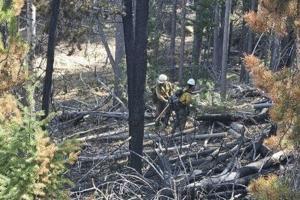As 75-mile-an-hour winds whipped black smoke across the sky, I stood in my kitchen, worrying about what it would take to evacuate. My husband had packed up the medications, arm and knee braces and heating pads I needed to manage my debilitating, chronic pain. But now what? It was Jan.
8 in Los Angeles. There were 100,000 people under evacuation orders, and every hotel and Airbnb was booked. I had nowhere to go, no refills remaining on one of my medications and no idea how bad my pain would become if I missed a scheduled medical procedure.

Fires, floods, hurricanes and other natural disasters are harder than ever. And when they do, people with disabilities often feel the impact “first and worst,” said June Isaacson Kailes, a disability policy consultant in Los Angeles. An , or 16 percent of the world’s population, has experienced significant disability.
Despite facing a of injury or death than those without disabilities, however, 84 percent of people with disabilities worldwide . “Your survival depends on having a plan and knowing how to carry out that plan,” said Mike Diehl, an amputee and former firefighter in Middletown, Ohio. We are having trouble retrieving the article content.
Please enable JavaScript in your browser settings. Thank you for your patience while we verify access. If you are in Reader mode please exit and your Times account, or for all of The Times.
Thank you for your patience while we verify access. Already a subscriber? . Want all of The Times? .
.
Health

When Natural Disasters Hit, People With Disabilities Feel Them ‘First and Worst’

Having a plan in case you need to evacuate or lose power is essential. Here’s how to make one.















